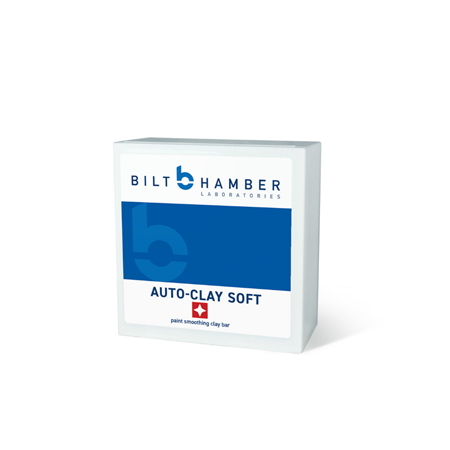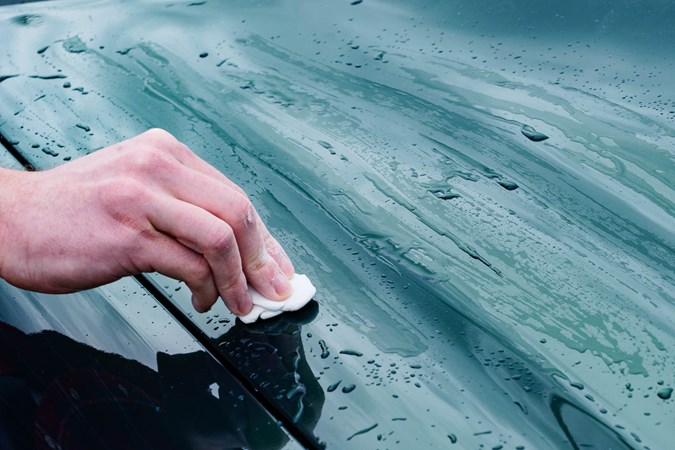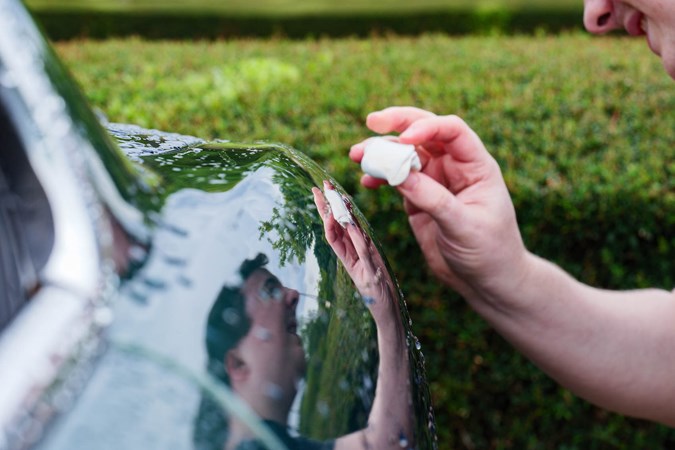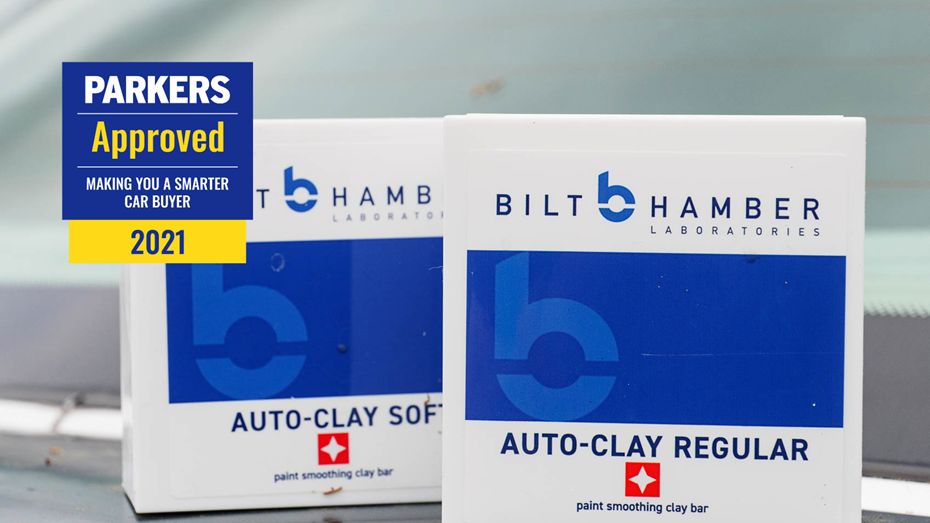If you’ve fallen down the rabbit hole of automotive detailing you’ll have inevitably read about the wonders of the clay bar. Used by serious detailers to remove contaminants like overspray and tar from bodywork, they’re an effective addition to your cleaning arsenal.
Problem is, it seems like a lot of work for not a lot of visual gain at first glance. Not only do you need to buy the clay (which you need to change every six months and can’t use if you drop on the ground), but the vast majority require a lubricant to work too.
Bilt Hamber’s Auto-Clay is supposedly different however. Designed to be water-activated, it removes the need for lube, replacing it with simple hose water. And where most clay bars offer 100g or so of product, the Auto-Clay comes with a whopping 200g of clay, making it excellent value for money. To test whether it’s the perfect clay bar on a budget we’ve tested two types, regular and soft to see what’s what.
Bilt Hamber Auto Clay Bar Regular

Price: £14.99 | VIEW OFFER
Bilt Hamber Auto Clay Bar Soft

Price: £15.49 | VIEW OFFER
Why would you clay bar your car?
If, when you run your hand over your car’s bodywork your paintwork feels bumpy and gritty then it may be time to break out the clay bar. A clay bar removes these deposits and contaminants that build up on your car over time leaving you with a glass-smooth paint finish.
Serious detailers also argue that it introduces a positive form of marring into your paintwork as well, preparing the paintwork for polishing and sealant. This raises yet another important point about clay barring. Most detailers will recommend only clay barring your car when you intend to polish it, again raising the question of whether you should bother.
First impressions
We’re testing Bilt Hamber’s regular and soft Auto-Clay (a medium is also available). Both arrived in plastic cases, great for storage and ensuring nothing contaminates it while it’s not in use. Opening the case reveals the generously proportioned clay, looking like forbidden Turkish Delight wrapped in tracing paper and powdered.
Bilt Hamber recommends dividing the clay into four chunks which is what we did for both. The clay broke apart easily enough and it was easy to mould and shape.
Bilt Hamber Auto-Clay Regular

The regular Auto-Clay is most likely the first blend you’ll buy if you’re new to the world of clay barring. It’s formulated for heavily contaminated paintwork, cars that have never been clay barred before or use during summer. It was summer when we tested it and we had the heavily contaminated surface of a Jaguar’s bonnet to contend with, the perfect place to test the regular clay bar.
The bonnet was lightly hosed down, the clay bar readied for use and set to work, running it over the contours of the bonnet. Any fear that a lack of lubricant would make it difficult to use was quickly put to bed once we set to work, the clay glided over the bonnet, collecting nasty deposits with ease. Not only does it make a really nice noise as you run it over your paintwork, but it’s easy to use too, especially as the clay is very malleable.
Bilt Hamber Auto-Clay Soft

If your car’s paintwork is very good, or the weather is exceptionally cold then the soft Auto-Clay is the top choice for you. We used the c-pillar of the Jaguar because it had previously been polished making it ideal for the soft clay bar.
While the area as a whole was cleaner and there was less to remove, the clay bar did still remove plenty of contaminants with ease. Like the regular clay bar, it glided over the bodywork with ease with nothing more than water needed. It also folded easily and helped produce some stellar results.
The verdict
Bilt Hamber Auto-Clay represents great value for money. If this is your first time clay barring and you aren’t fully sure you want to invest too much into it, the fact these bars work without any lubricant is a great selling point. Add in the exceptional ability to lift grime from the bodywork, the generous portions of clay in each box and the overall quality and these clays are really worth the money. If you want to clay bar your car then these are your best choices, it’s that simple.
5/5
How we tested it:
As the two Auto-Clays were designed for different cars we used two cars to test each one on. Tom Wiltshire’s Peugeot 605 was the perfect candidate for the Regular Auto-Clay as the paint was ripe with contaminants. Richard Kilpatrick’s Jaguar XJ allowed us to test both bars, the bonnet (as you’d expect) was ideal for the regular clay bar while the C-pillar was the perfect area for testing the soft Auto-Clay as it had been previously polished.
We used the Ryobi power washer first to clean the area before using a Bosch Fontus to gently wet the surface for the clay bar to work on. We rubbed the panels according to the instructions and buffed them with Gtechniq drying towels.

Sign up to the Parkers Newsletter to keep up to date with more of the latest reviews, news, and recommendations from the Parkers team.
Just so you know, whilst we may receive a commission or other compensation from the links on this website, we never allow this to influence product selections – read why you should trust us
Just so you know, we may receive a commission or other compensation from the links on this website - read why you should trust us.














